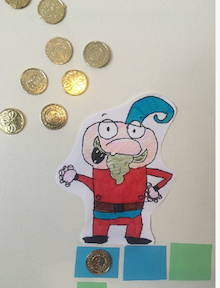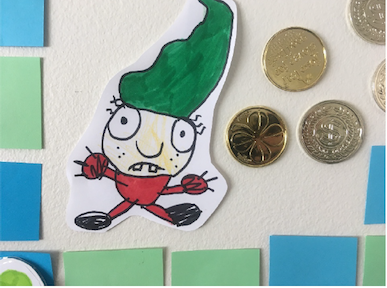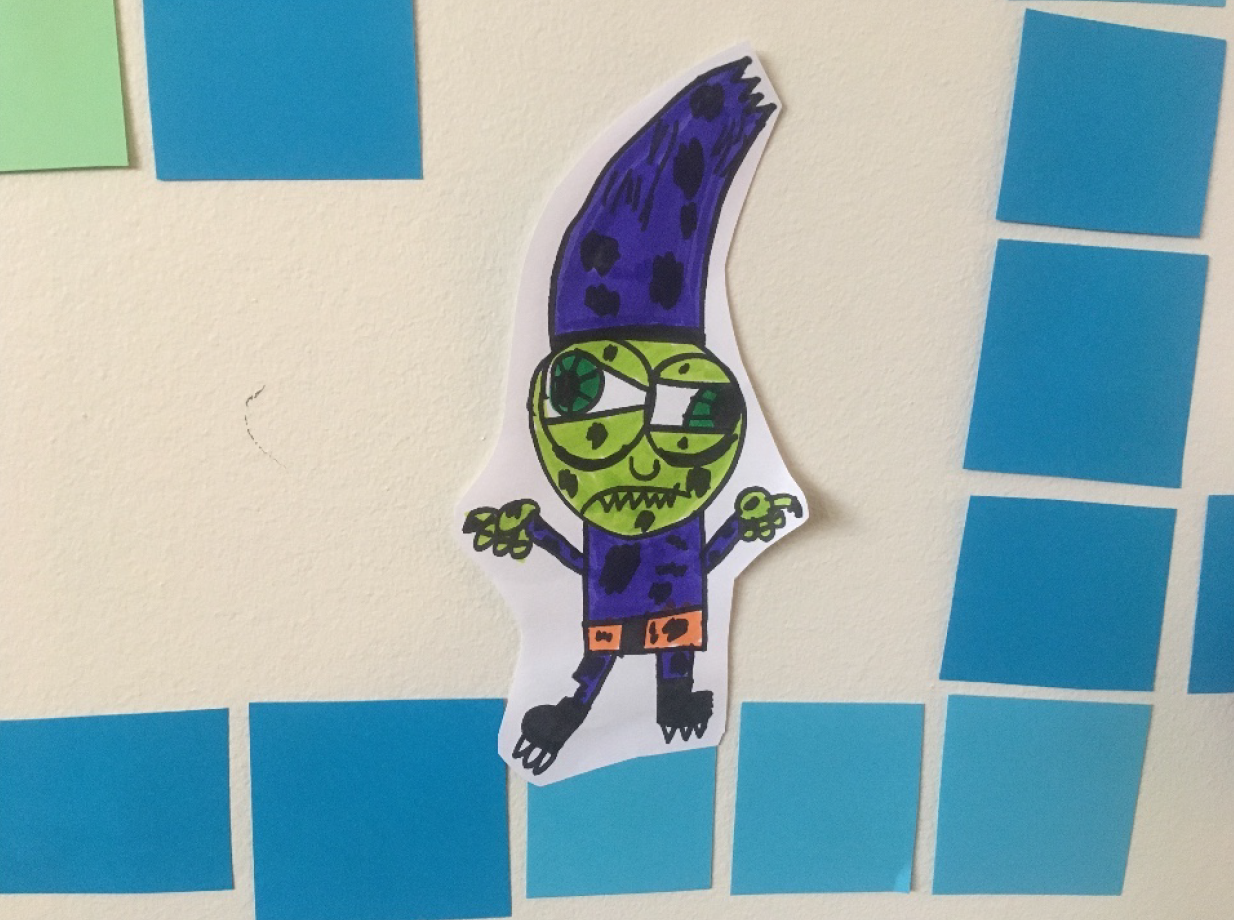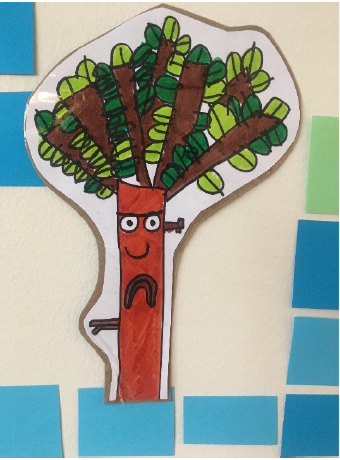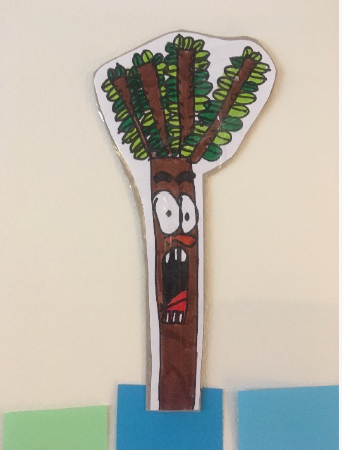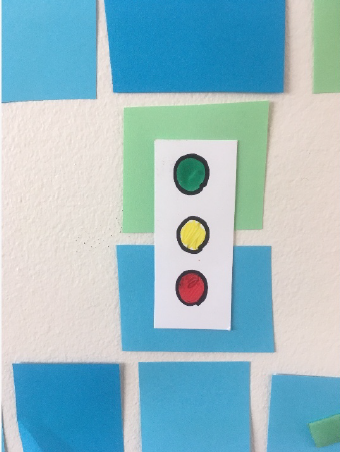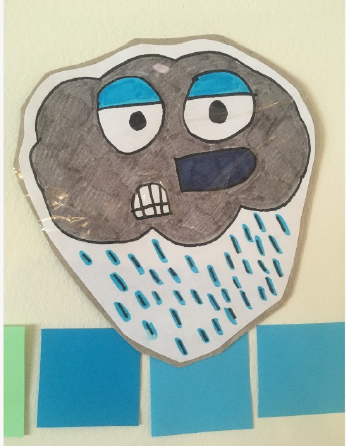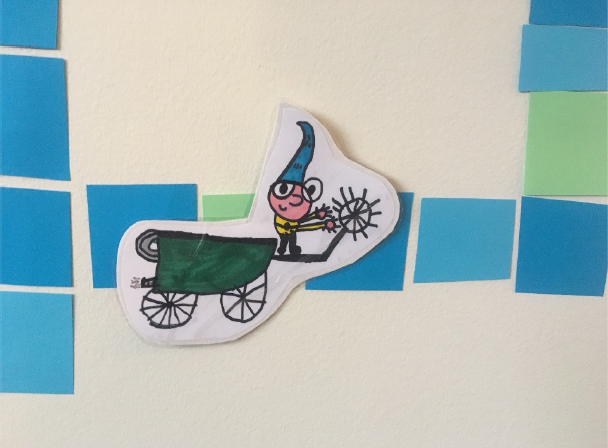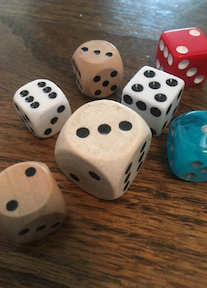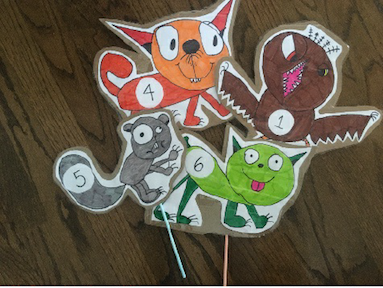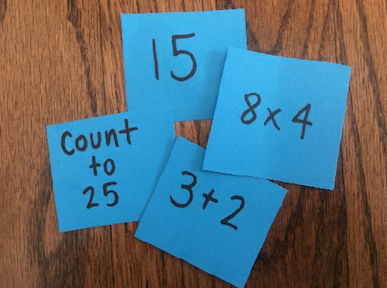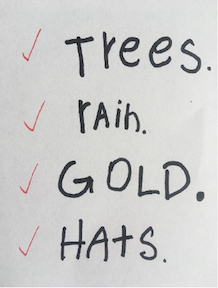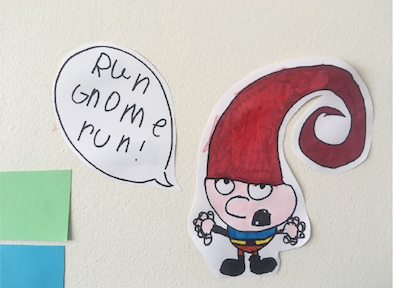How to make teaching kindergarten math fun and easy!
This blog post is part of a series of “Stories to the Children” written by the educators of Calgary Nature Kindergarten to the children in their kindergarten class during the time of remote schooling due to the coronavirus pandemic. The story was originally drafted in StoryPark for the class. It is written to the children with notes to parents. It is adapted here as, hopefully, a source of inspiration and enjoyment for parents and other educators.
Boredom is not an option at Ms. Sarah's house this week as everyone is buzzing about the hottest new board game to hit the shelves:
Run Gnome Run
In this runaway hit, a group of adventurous gnomes search for gold and navigate their way through a maze filled with road blocks, all while trying to keep their hats, and beards, safe! Today, Ms. Sarah provides a sneak peek, behind the scenes, into how this most amazing game was created.
Stage 1: What's our game about?
The very best games speak to our own interests and passions - so, what do you love? Elephants? Firetrucks? Brachiosaurus? At Ms. Sarah's house, the answer was simple...garden gnomes.
Stage 2: What kind of math game is it?
The project managers at Ms. Sarah's house wanted to make a board game, but other options could include dice games, card games, domino game...the possibilities are endless!
After numerous attempts by one project manager to dance on top of the work in progress, it was decided we would build our board game right on the wall - now it's toddler proof!
Stage 3: What's the goal of our game?
Because the creators at Ms. Sarah's house chose to make a board game the goal was simple, to get from start to finish.
They included the additional challenge of collecting gold coins because everyone loves collecting gold coins and escaping an assortment of "bad guys" because nothing is more thrilling than being chased by a spooky green gnome.
Stage 4: Are we having fun?
Nothing kills a project like the creeping sense that the fun of it is slipping away. The designers of Run Gnome Run kept things fresh and silly by imaging storylines, creating characters, and coming up with obstacles meant to foil players of the game. We stuck to working in preferred art mediums to keep confidence levels up, and all those involved in the project tried to maintain an, "Ok - why not?" attitude throughout the process.
Stage 5: Where's the kindergarten math?
Admittedly, as the makers of this game lost themselves in design process, site supervisor, Ms. Sarah, had to remind herself to look for the learning opportunities. After consulting with her co-conspirators, she was happy to find math alive and well throughout the game, along with many opportunities to increase or ease the difficulty level depending on the player (dancing toddler, I'm looking at you!).
Dice for quick recognition of amounts and encouraging simple addition (made more challenging by adding more die to game)
Counting when moving space by space across the board (made more challenging by adding more die to game)
Having designers use their own writing to print numbers as a part of the game
Using coins for exploring concepts of comparison, more or less, and representation
Some of our players were given bonus challenge cards to keep them on their toes.
The architects of this game also kept a running list of ideas to keep them on track and added writing to the game board itself.
For parents:
Games are one of the best kindergarten activities for early learners to develop and expand their numeracy skills. These hands-on, tactile experiences offer multiple opportunities for children to engage in learning, building confidence through repetition and strengthening number sense.
Kindergarten math games allow for early learners of all abilities to sharpen skills such as counting, recognizing amounts at a glance, comparing more and less, exploring concepts addition, subtraction and multiplication.
We are asking all families to participate in this project by creating their own "family math game" that can be played with two or more players, and encourages developing numeracy skills at a level appropriate to your child's abilities. Dice, card, and board games are just a few of the possibilities - the game can be as simple or elaborate as you and your child want it to be. For higher engagement, encourage your child to use their personal interests as the guiding force behind the project. You will be prompted to share your game through photos and descriptions, including a photo of your family game in action!
Your math game should include:
Clear instructions on how to play the game
Numbers written by your child as a part of the game
Use of numbers 1-10, at a minimum
Elements such as counting, recognizing numbers and amounts, comparing more and less, simple addition (or more advanced challenges depending on child)
Keep in mind that the Alberta Kindergarten curriculum deals only with numbers 1-10 (though we encourage children to explore numbers as high as their comfort level allows).
We've added learning tags from the Alberta Kindergarten curriculum to demonstrate possible connections between this project.
Learning tags:
begins to deal appropriately with frustration;
attends to capitalization and punctuation • recognizes capital letters and periods in print texts • capitalizes first letter of own name;
attends to grammar and usage • develops a sense of sentences;
compares quantities 1 to 10, using one-to-one correspondence. [C, CN, V];
demonstrates an understanding of basic rules and fair play;
develops perceptual–motor skills through activities involving eye–hand coordination; e.g., looking at picture books, stringing beads, cutting, pasting, drawing and collage work;
enhances legibility • forms recognizable letters by holding a pen or pencil in an appropriate and comfortable manner • explores the keyboard, using letters, numbers and the space bar;
enhances presentation • uses drawings to illustrate ideas and information, and talks about them;
expresses preferences, and identifies basic personal likes and dislikes;
relates a numeral, 1 to 10, to its respective quantity. [CN, R, V];
represents and describes numbers 2 to 10, concretely and pictorially. [C, CN, ME, R, V];
sorts a set of objects based on a single attribute, and explains the sorting rule. [C, CN, PS, R, V];
demonstrates curiosity, interest and some persistence in learning activities;
identifies and demonstrates etiquette and fair play • participates actively in learning tasks;
says the number sequence 1 to 10 by 1s, starting anywhere from 1 to 10 and from 10 to 1. [C, CN, V];
subitizes (recognize at a glance) and names familiar arrangements of 1 to 5 objects or dots;
works cooperatively with a partner or in a group − matching objects or events as being the same as or going together.
Tell us about your kindergarten math game
Now it is your turn! We’d love to hear from you! Please tell us 1) what kind of math game did your child create? 2) Share photos if we can - we all need a little inspiration and encouragement at this time!










